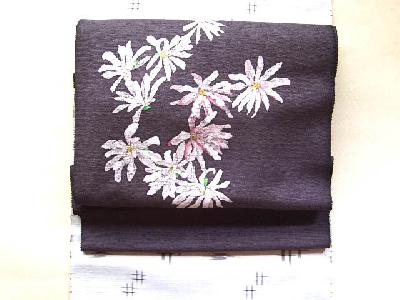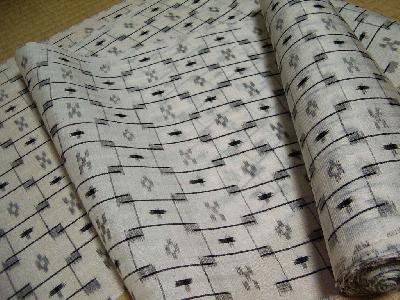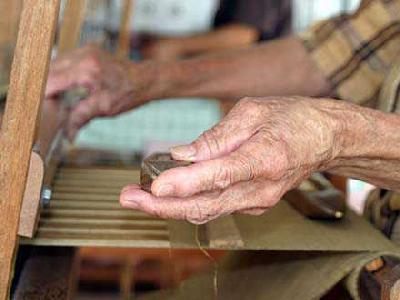|
Kumejima tsumugi is a form of traditional weaving on Kumejima island, which is where it is said to have originated. Legend has it that it was introduced by the mythical figure 'Douno-Hiya', who had learned sericulture in China in the late 15th century.
The development of this technique began on the island, and was later introduced to the main islands of Japan, where it was transmitted as Oshima tsumugi, Kurume tsumugi and Yuuki tsumugi.
Tsumugi is a strong silk fabric, woven from silk. Kumejima tsumugi is made using silk floss from the cocoon of a silkworm, which is then spun into threads. The threads are dyed with natural plant and earth dyes and carefully woven by hand.
One particular characteristic of this cloth is that the whole process is carried out by one person.
It was designated as a traditional craft in 1975, and an intangible asset of Okinawa Prefecture in 1977.
The development of this technique began on the island, and was later introduced to the main islands of Japan, where it was transmitted as Oshima tsumugi, Kurume tsumugi and Yuuki tsumugi.
Tsumugi is a strong silk fabric, woven from silk. Kumejima tsumugi is made using silk floss from the cocoon of a silkworm, which is then spun into threads. The threads are dyed with natural plant and earth dyes and carefully woven by hand.
One particular characteristic of this cloth is that the whole process is carried out by one person.
It was designated as a traditional craft in 1975, and an intangible asset of Okinawa Prefecture in 1977.
| [+ADDRESS] | 
|













